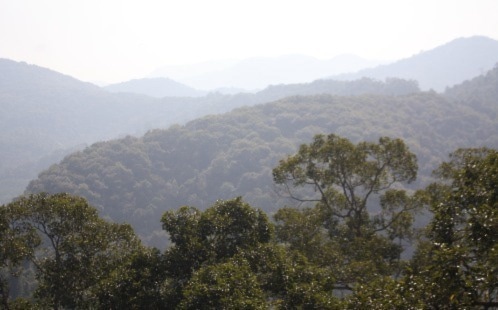Reviewed by Mila PereraSep 12 2022
Researchers from Western Sydney University have recently published a new study that quantifies the phosphorus limitations on photosynthesis in tropical forests and shows how addressing these limitations can help to improve the global climate.

Image Credit: Western Sydney University.
Tropical forests absorb more carbon from the atmosphere than any other ecosystem and play a significant role in regulating global temperature.
Although they are among the most productive ecosystems on the planet and biodiversity hotspots, they frequently lack phosphorus, a crucial plant nutrient, which thus inhibits photosynthesis.
To comprehend the relationship between phosphorus and photosynthesis, the research team conducted the most thorough investigation to date across 12 different countries as part of the study published in Nature Communication. They also obtained approximately 18,000 measurements.
According to the study’s lead author, Professor David Ellsworth of the Hawkesbury Institute for the Environment, the study confirms that leaves absorb carbon dioxide at a rate that increases with their phosphorus content.
For the first time, the analysis has established that phosphorus is a considerable constraint on the photosynthetic capacity of leaves worldwide. This finding has far-reaching implications considering that over a third of the world’s soils are below optimal phosphorus, as illustrated by the positive response of plant growth to the addition of phosphorus in the form of fertilizer.
David Ellsworth, Study Lead Author and Professor, Hawkesbury Institute for the Environment
Professor Ellsworth claims that understanding photosynthesis and its effects on the environment is essential for forecasting how the world's ecosystems will react to rising atmospheric carbon dioxide concentrations and climate change and, consequently, for forecasting future climate change.
The findings expand the available knowledge of how the world’s ecosystems are responding to climate change. It not only affects our understanding of the role tropical forests have in global climate change but creates opportunities to enhance the productivity of the forests themselves.
David Ellsworth, Study Lead Author and Professor, Hawkesbury Institute for the Environment
As part of the study, the research team used one of the few global biosphere models, including phosphorus cycling, to generate a mathematical formulation illustrating the relationship between photosynthesis and leaf phosphorus.
Modeling showed how the discovery could be beneficial in projecting global photosynthesis. It revealed that tropical forests could absorb significantly more carbon from the atmosphere if these ecosystems were richer in phosphorus than they currently are.
Journal Reference:
Ellsworth, D. E., et al. (2022) Convergence in phosphorus constraints to photosynthesis in forests around the world. Nature Communications. doi.org/10.1038/s41467-022-32545-0.